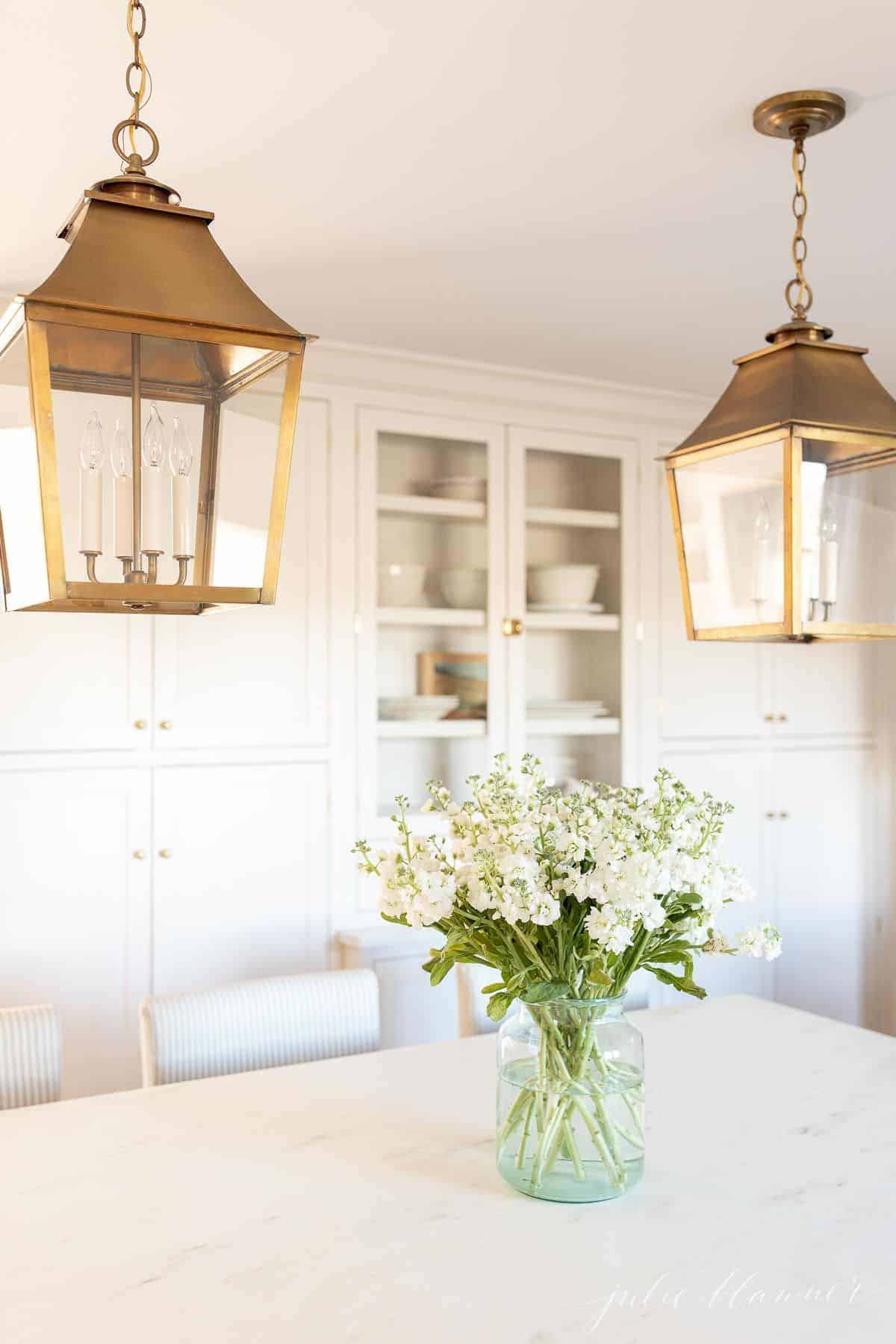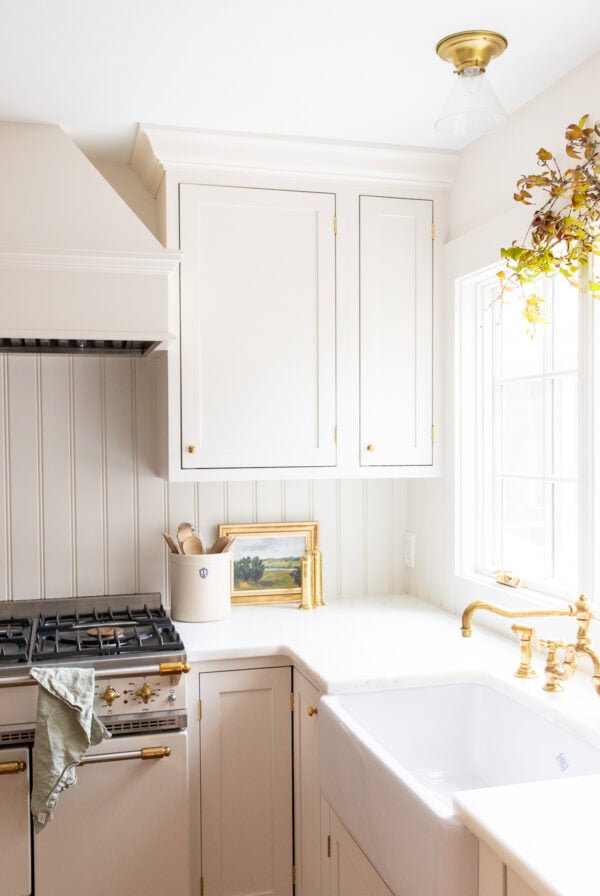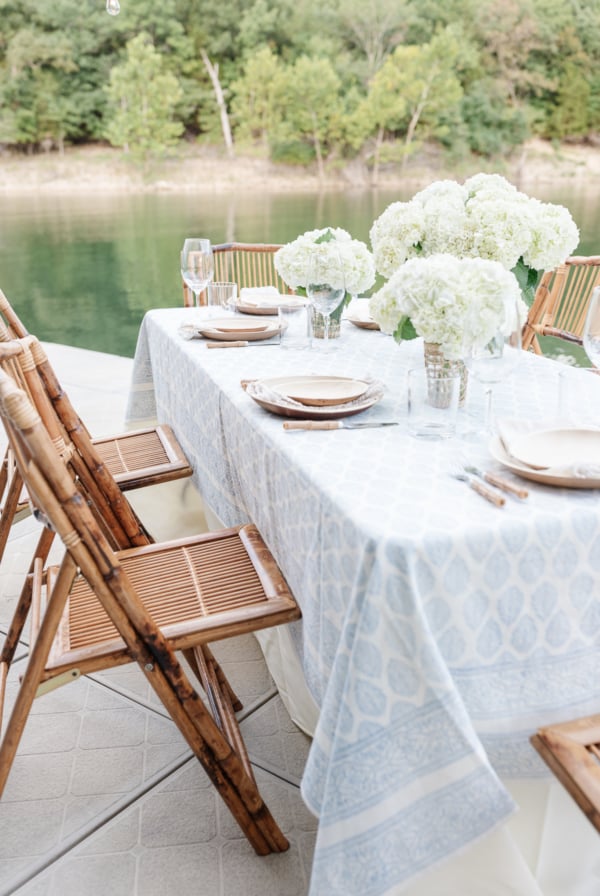Find everything you need to know about fragrant, fluffy stock flowers! This charming, ruffly old-fashioned garden flower is one of the most underrated blooms around – learn how to make a white stock flower arrangement.

Also called Matthiola incana, stock is a prolific bloomer and makes an excellent cut flower!
If you’ve never heard of stock flowers, boy are you in for a treat! While they might seem a bit unsuspecting and have a tendency to fade into the background of other blooms in a bouquet, these are some of my favorites.
Stock are a wonderful cut flower! While they are often used as a filler or a background bloom, they can also be the simple, elegant star of the show (as seen in these photos).
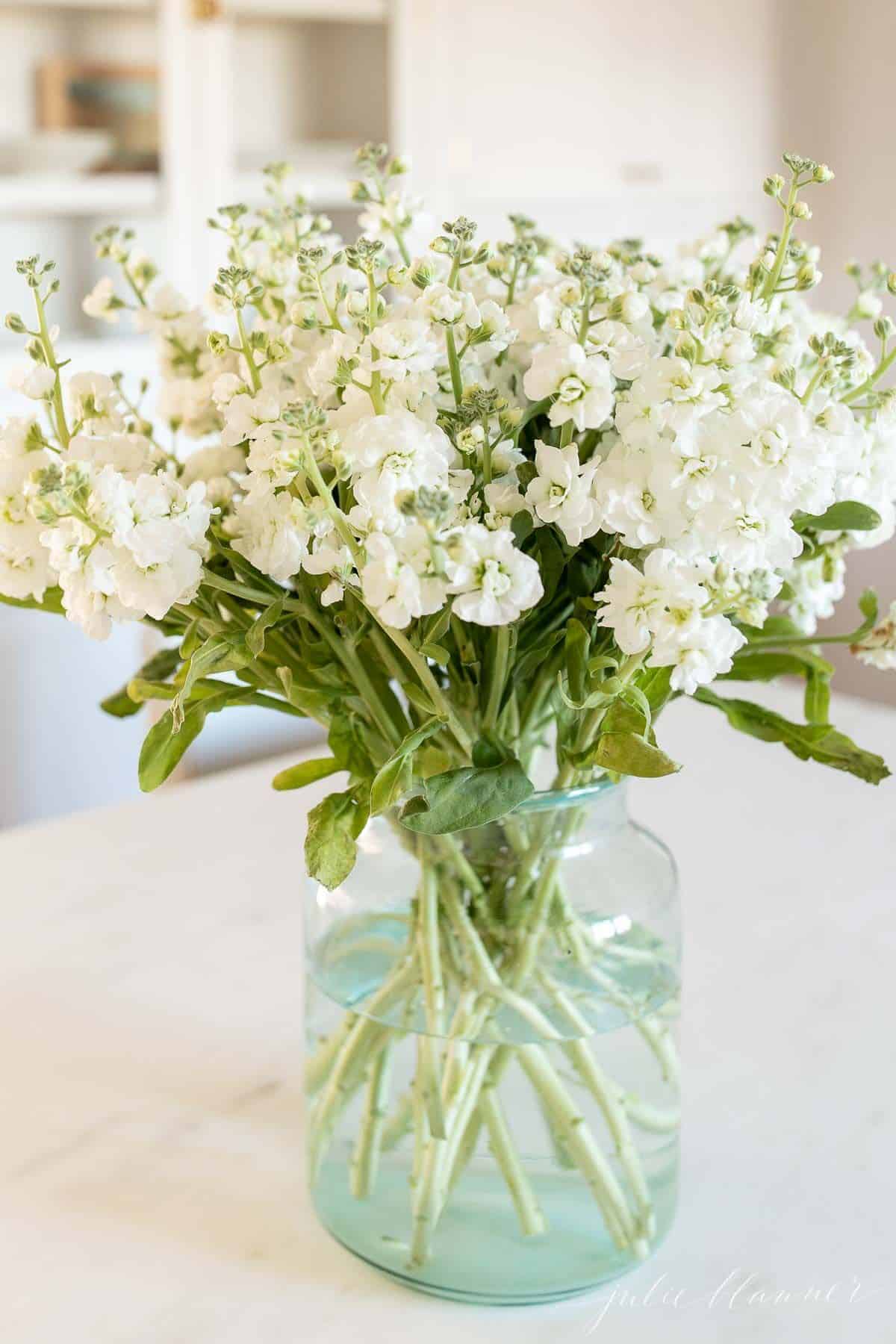
Commonly found in inexpensive grocery store bundles, stock flowers are known for their slightly spicy, clove-like fragrance. It’s a peppery scent that creates the sweetest ambiance in your home.
Psst… I love a delightful home fragrance! Get my favorite tips for How to Make Your Home Smell Amazing, and creating a Warm and Cozy Home, like this incredible Homemade Potpourri!
In our Midwestern climate, stock grows as an annual in many local gardens. It’s available in a spectacular array of colors, and there’s a little something for everyone! It can fit into bold jewel toned bouquets or my personal favorites… soft pastels.
I love sharing all my favorite floral design tips and tricks with you! Learn how to be your own florist with the best Florist Secrets, tips for Where to Buy Flowers, and Trader Joe’s Flowers.
I wanted to give you a little background on this beautiful bloom, as well as a simple, fast tutorial to create your very own stock arrangement or stock flower centerpiece!

What is a Stock Flower?
Stock, or Matthiola incana, belongs to the Brassicaceae family of plants. Believe it or not, it’s the same plant family that includes cabbages!
Once known to grow wild in England, gardeners love this sweet showy bloom. Each stem features clusters of fluffy, dense blooms that grow in a vertical formation and can grow up to three feet tall.
Stock Flower Colors
These beautiful blooms come in a wide variety of spectacular shades! There is something to fit every style and event in your life.
Choose from the following colors:
- White Stock Flowers
- Peach
- Pale Pink
- Butter Yellow
- Magenta (or Fuschia)
- Purple
- All Shades of Lavender
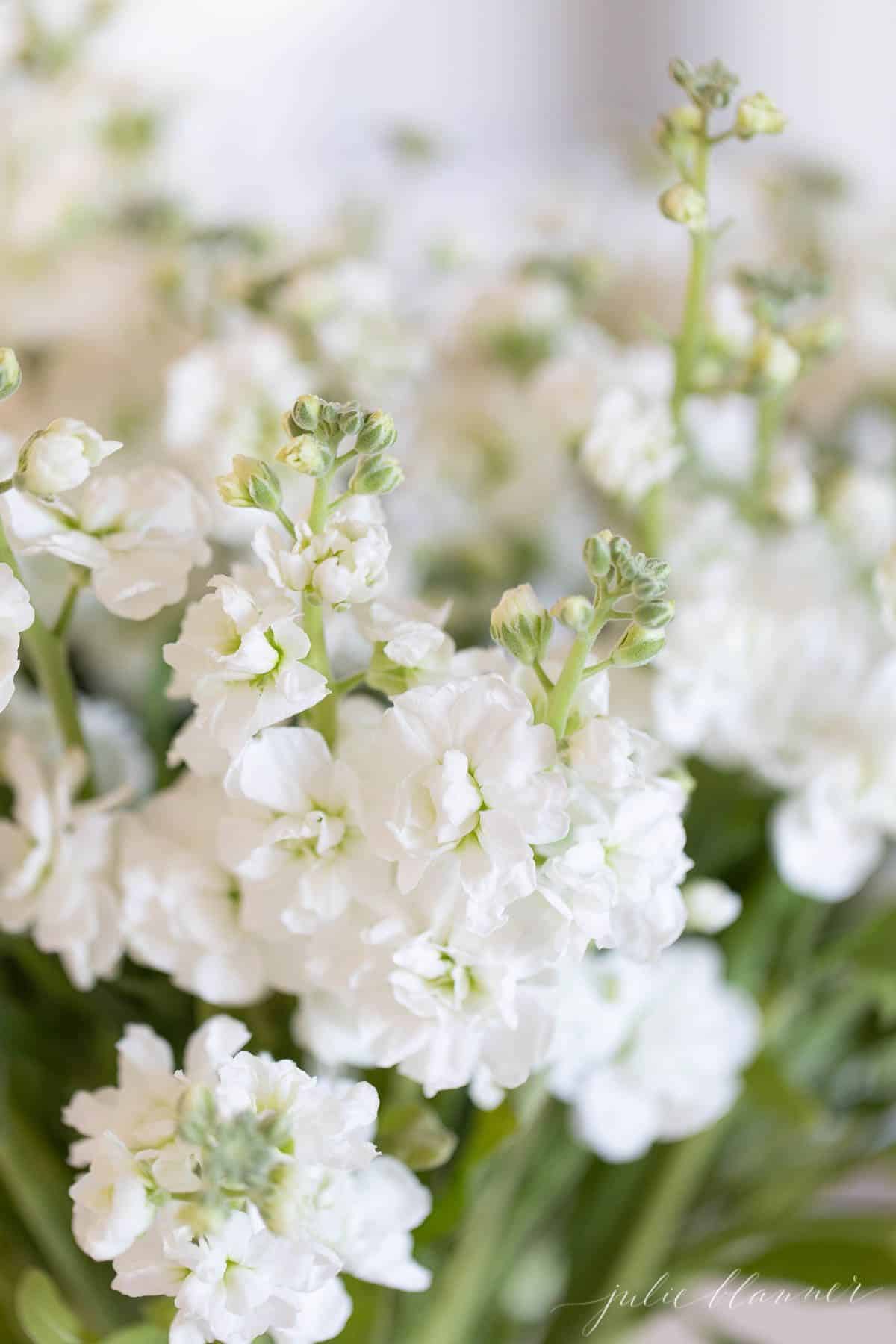
Stock Flower Availability
Lucky for me, (and lucky for you too!), this fragrant flower is available year round! Because it’s grown throughout the world in climate-controlled greenhouses, growers have brought this bloom to the forefront of fresh flower culture.
If you’re planning a wedding or event, stock is an excellent alternative to other more pricey blooms. In a high end flower shop, you can expect to pay anywhere from $4 to $8 per stem of stock flower.
At grocery stores, I often find bundles of stock for anywhere from $6 up to $20.
When properly cared for, stock has a wonderful vase life. You can generally expect 7 to 10 days in water at room temperature.
Use clippers or shears for a clean slice (at an angle) through the woody stems of your stock flowers. Be sure to remove all leaves that would rest under the waterline in the vase. Change the water each day, with a clean cut at the end of your stems to ensure freshness.
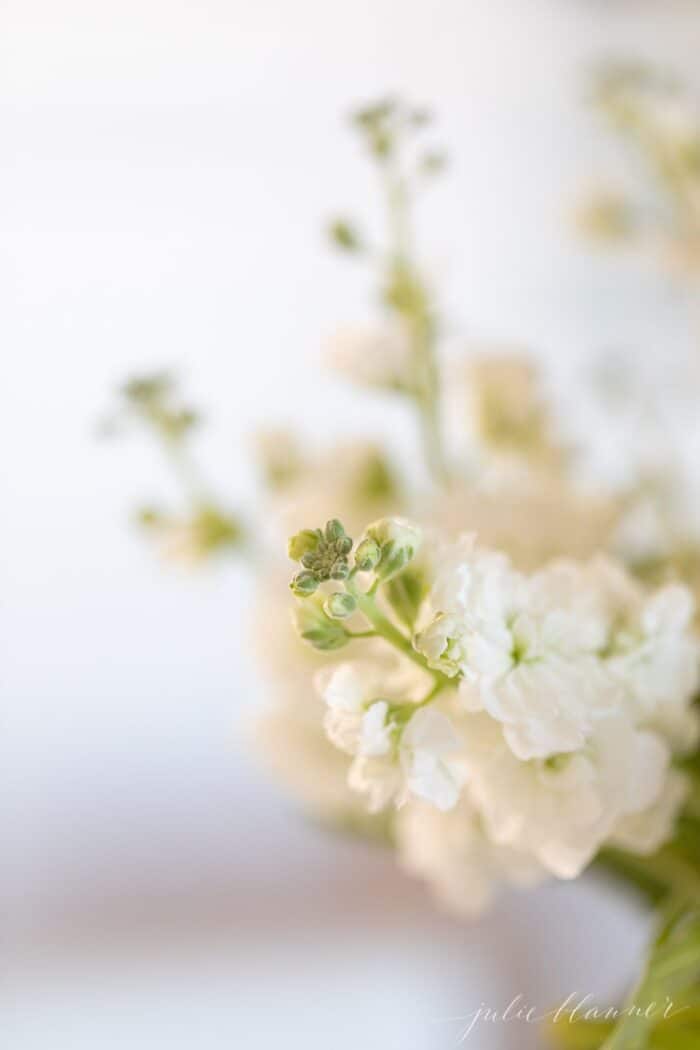
What You’ll Need to Create a White Stock Flower Centerpiece
You won’t need much to create this incredibly simple centerpiece arrangement! It’s a beautiful show piece in any room of your home, or especially on your dining room table.
- 20-30 stems of white stock flowers
- Your favorite vase – the one I used here has an opening of approximately six inches. Find it here.
- Flower shears
- Clear Florist Tape
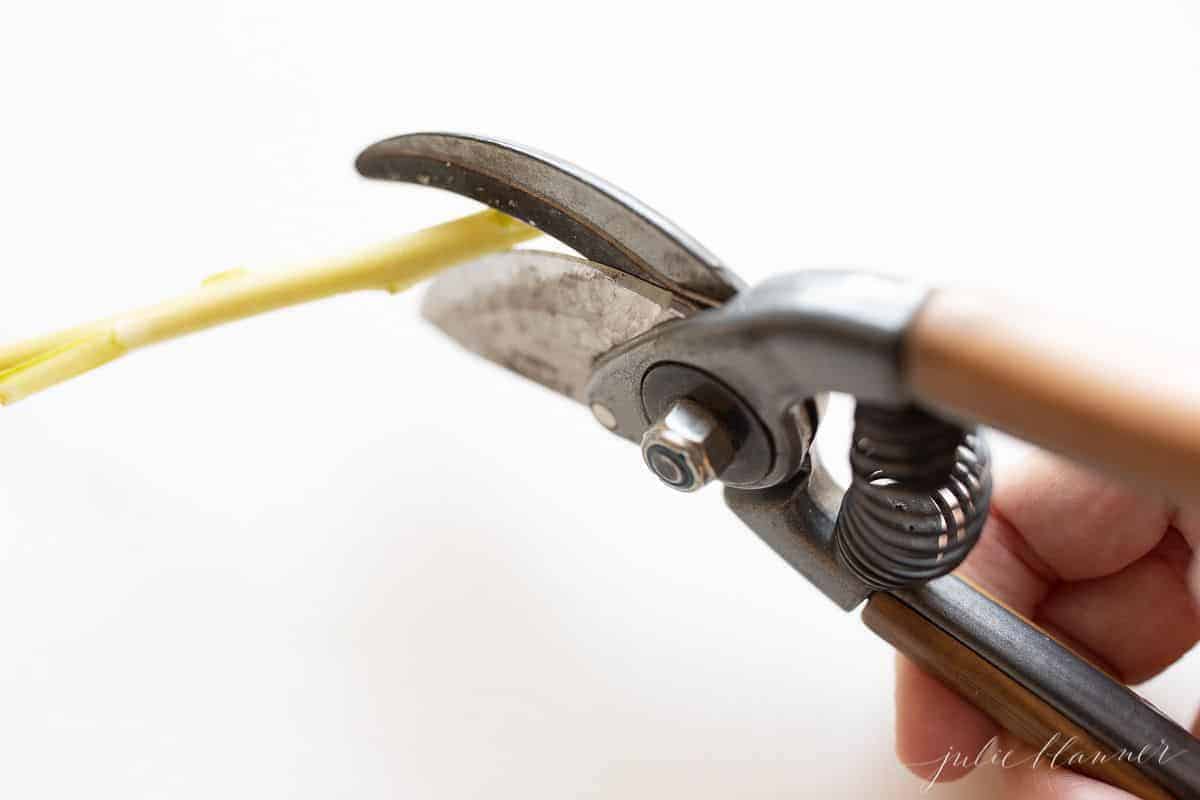
How to Arrange Stock Flowers
- Fill a vase with water.
- Create a taped grid across the top of the vase. This allows the blooms to rest at different points within your container. Learn how to create a grid with tape.
- Measure your stock stems to equal length to set just above the vase at opposite angles. Cut stems at an angle and remove any leaves that will fall below the rim of the vase.
- Continue with your stems of stock around the edge of the vase, and repeat to fill.
- If working with more than one type of flower, add a third flower in to fill at three points in the vase, creating a triangle.
You can find more flower arranging tutorials and my favorite vases and vessels to arrange in here.
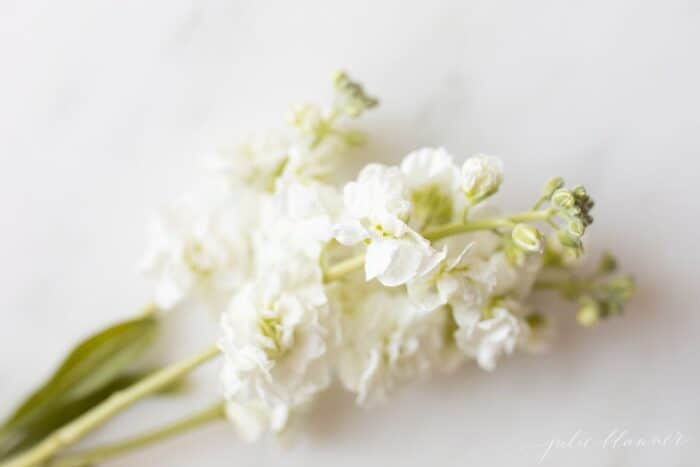
Tips
- Choose dense stems with no yellowing on the stem or leaves to ensure freshness.
- Check closely to see if any of the bottom blooms on the stem are dying. Stock tends to show its age with the lowest blooms since those bloom first on the stem.
- You can create a stock centerpiece using only stock flowers, but they make great filler, so don’t be afraid to mix them with other blooms.
- Stock are happiest and freshest when well hydrated. To allow the woody stems of stock to take in plenty of water, be sure to cut their stems at an angle and use clean water.
- Recut your stock flowers each day and change the water in your vase – this always leads to a longer vase life no matter the bloom!
- The smaller the neck of your vase, the less stems you’ll need!
Stock flowers also dry beautifully! Loosely tie your stems together for plenty of air circulation. Hang them upside down in a cool, dry room and they will make a lovely dried flower arrangement!
